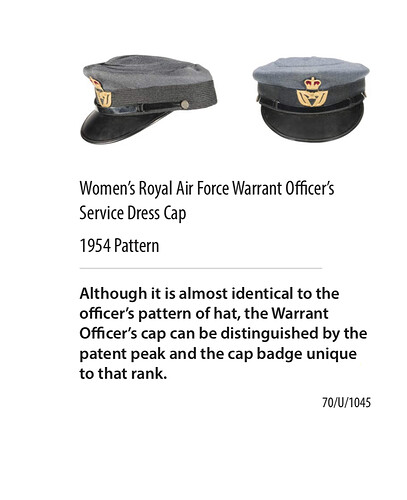The best response on this so far is from @Tango_Foxtrot…but the whole thing needs unpacked for a bit of proper analysis. Too many people are far too close to this to be objective, and are blinded by superficial familiarity.
Firstly, let’s consider the overall situation for uniform design patterns aside from head-gear, for Officers, Warrant Officers & Other Ranks of the Royal Air Force and related Air Forces of the Crown.
A statement of simplified but indisputable facts:
Air Force Officers (whether commissioned or warranted for service) have always worn cap-badges, ranks & dress uniforms that are fundamentally naval in pattern (other than being blue-grey cloth and single-breasted cut);
Air Force Other Ranks have always worn cap-badges, ranks & dress uniforms that are fundamentally military in pattern (in the original sense of the word ‘military’, meaning “ground-based armed personnel”, which in the late 1900s referred only to army soldiers, marines on land, and their officers: the broader meaning of ‘military’ to include all offensive/defensive armed services has its origins in late WW2 & onwards).
In other words, the Senior Service (RN/RNAS) was (and is) reflected in the uniforms&insignia worn by the Officer cadre of the RAF; and the subordinate service (Army/RFC) is embodied in the uniforms&insignia worn by Other Ranks of the RAF.
(If anyone seriously doubts the truth in what I’m saying, try staring at an RNAS cap-badge, followed by an RAF Offr/WO cap-badge; then, stare at an RFC field-service cap-badge, followed by an RAF OR’s cap or beret badge).
Clearly, RAF Air rank Officers in 1918 and onwards followed the headgear style of patent-leather peaked visor caps with ‘gold passing’ worn by Flag Officers in the RN.
However, the situation with ‘field officers’ in the RAF (which could be thought of here as being Sqn Ldr and below) was such that their cloth-covered peaked caps were intended to indicate their lower commissioned status, equivalent to 2nd Lt-Capt/Major in the RM & Army. Military tailors were also at that time used to producing cloth-covered ‘service dress’ peak hats for the junior and middle-ranking officers that were required to personally-purchase >all< elements of their uniform.
It should also be borne in mind (and this is all prior to the modern FADS/Future Army Dress System, which I need someone to explain to me) that to a close approximation, most forage-cap (ie visor cap) wearing regiments & corps of the British Army traditionally wore two different patterns of peaked cap, one referred to as ‘regimental full dress’ (apparently referred to as ‘blues’…even when made with a red crown, such as for eg RMP) and this type of peaked hat tended to have a patent-leather ‘naval’ style of peak.
Whereas, when Army personnel were wearing a “service dress peak cap” in their No1s or barrack dress, this had a plain khaki crown and similar cloth-covered visor. (There seems to now be an odd official reversal of standards for this in the modern Army, where instead of the widespread wearing of ‘blues’-style fulldress caps in their No1 dress and barracks, they’re by regulation now expecting basic khaki cloth ones to be worn: presumably FAD…if I were to guess, the Household Division may not follow this direction).
The situation for cloth-covered peaks being worn by Fg Off to Wg Cdr inclusive almost certainly relates to the ‘field’ nature of their rank, deliberately distinguishing them from Air Officers, whilst with Aircraftman to Flight Sergeant the wearing of leather (originally, non-patent/unshiny) peaked caps as their own ‘regimental’ headgear as service dress was a step-up from basic cloth.
It’s possibly also worth noting that the current RAF Dress Policy Committee has (fairly recently) shelved the proposal for the male Warrant Officer peaked cap to be replaced by the standard basic cloth-covered Officers’ peaked cap (as is already the case for female RAF WOs)

